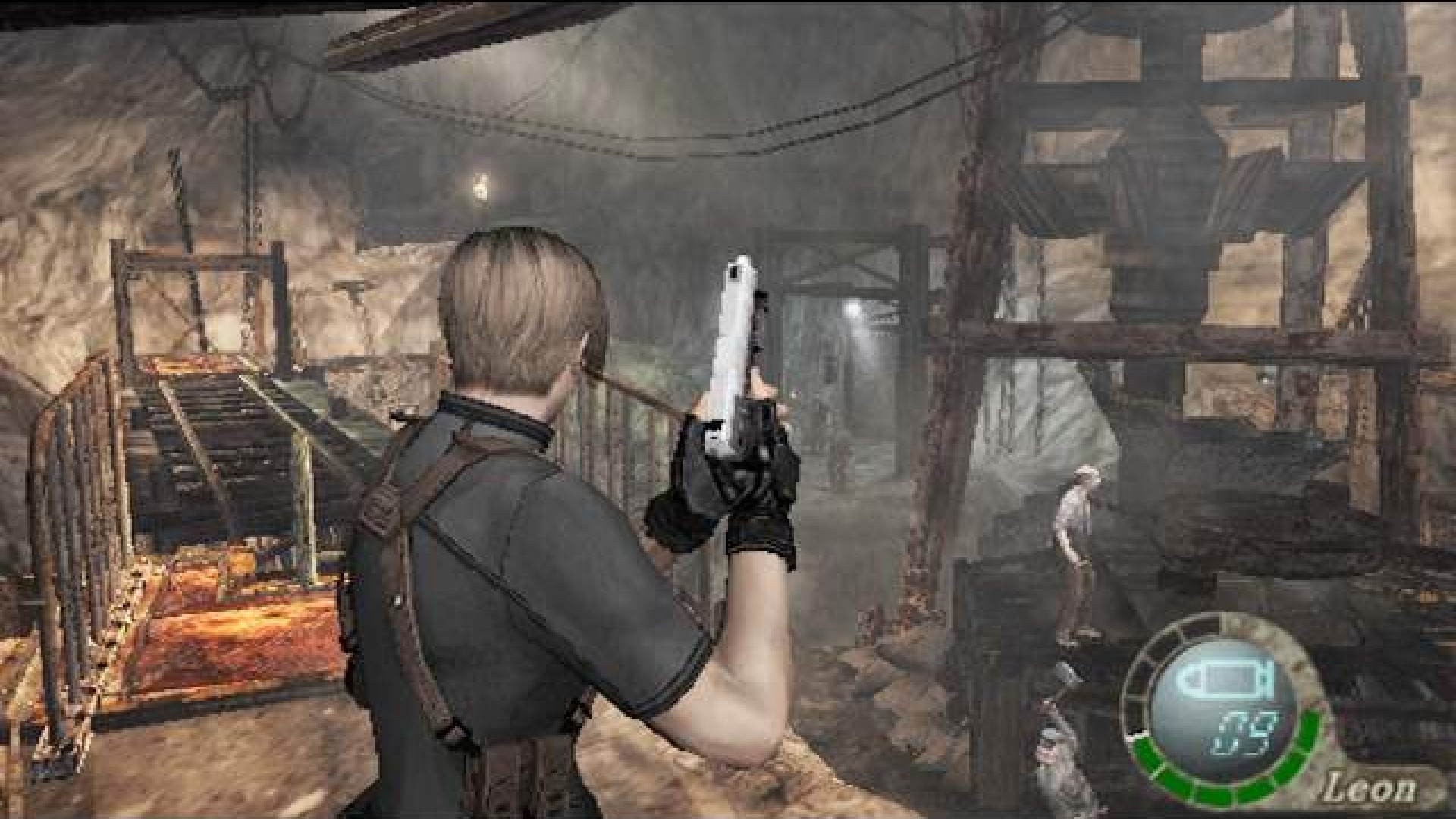
While there had been a handful of innovations during its first three critically acclaimed games, the core gameplay of the main Resident Evil series had remained broadly the same by the turn of the century. As the new millennium dawned, it was time for a significant change that would redefine the series forever.
Whether you’re a fan of the series or not, there's undoubtedly no argument that Resident Evil helped redefine video games in the mid-90s and propelled the Sony PlayStation into a more mature demographic. Open and tense locations, limited ammunition, a mysterious corporation, oblique puzzles and, of course, those shambling undead corpses all contributed massively to a successful regeneration of the survival horror genre. And back in 1996, we didn’t seem to mind the tank controls and those painful door animations. This was a frightening experience like no other.
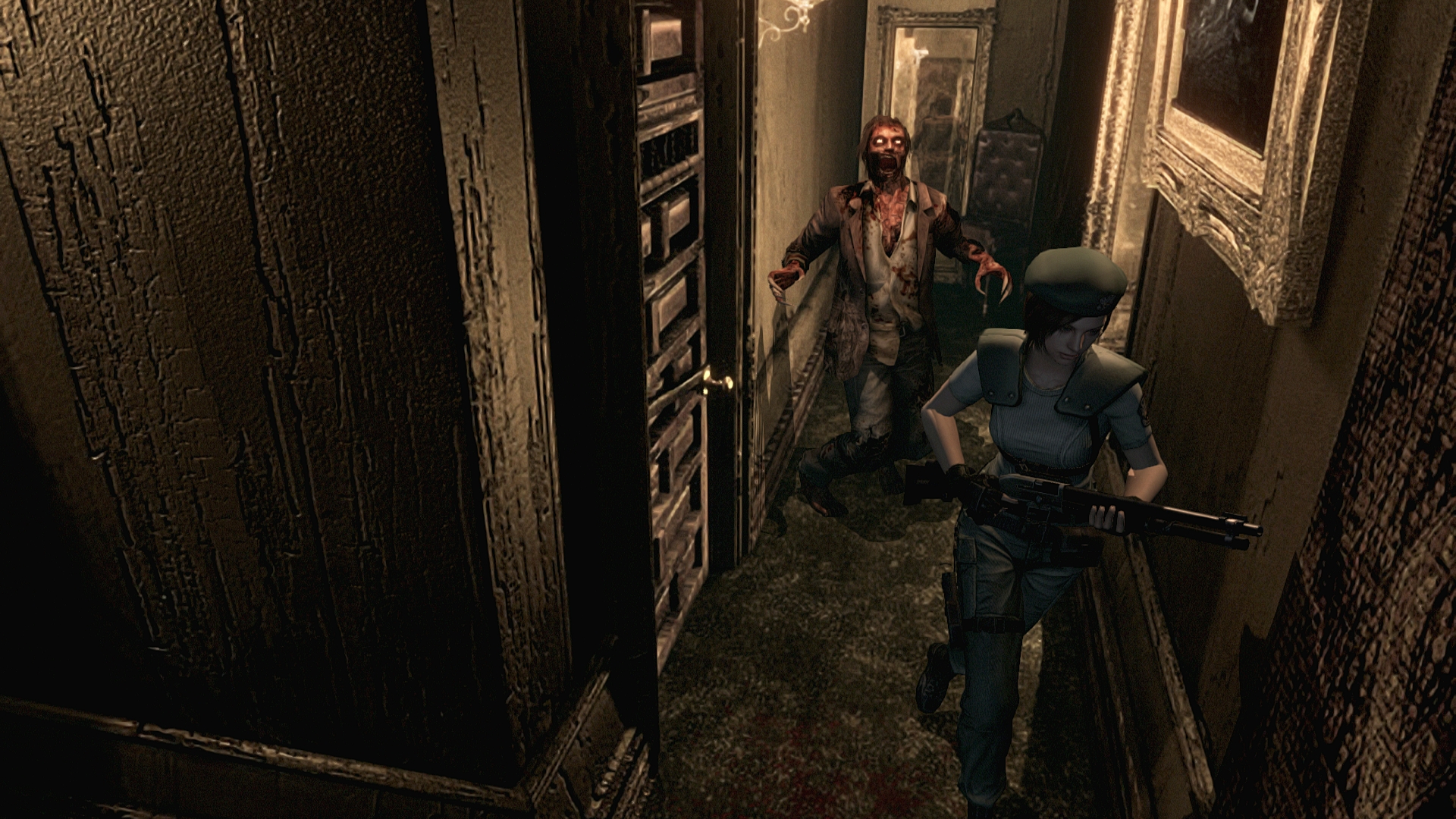
The controls and the camera suited players at the time, but they were a high skill floor for people to learn.
Alex Moore, Firesprite
"I remember walking into a lot of walls!" smiles Alex Moore, designer on Firesprite’s brutal VR survival horror game, The Persistence. "The controls and camera suited the game at the time, but they were a high skill floor for players to learn."
While it retained the tank controls and pre-rendered backdrops, Resident Evil 3: Nemesis included a few nods to a new direction. Much of the original game's anxious skulking of tight corridors was gone, as was the laborious trudging across the map to find a specific item. Instead, we got the mutated Nemesis, stalking Jill Valentine with a rough gargled exhortation of "STARS" as the series took a notable move towards action-based gameplay.
Then, with further advances arriving with the Sega Dreamcast game Resident Evil – Code: Veronica in 2000, Capcom's decision to publish a remake of the original game on the Nintendo GameCube pointed the way to a new beginning. "Looking at Resident Evil now, I think it's earned its place in gaming history," says Alex Aniel, author of Itchy, Tasty: The Unofficial History Of Resident Evil. "But it was superseded by the legendary GameCube remake."
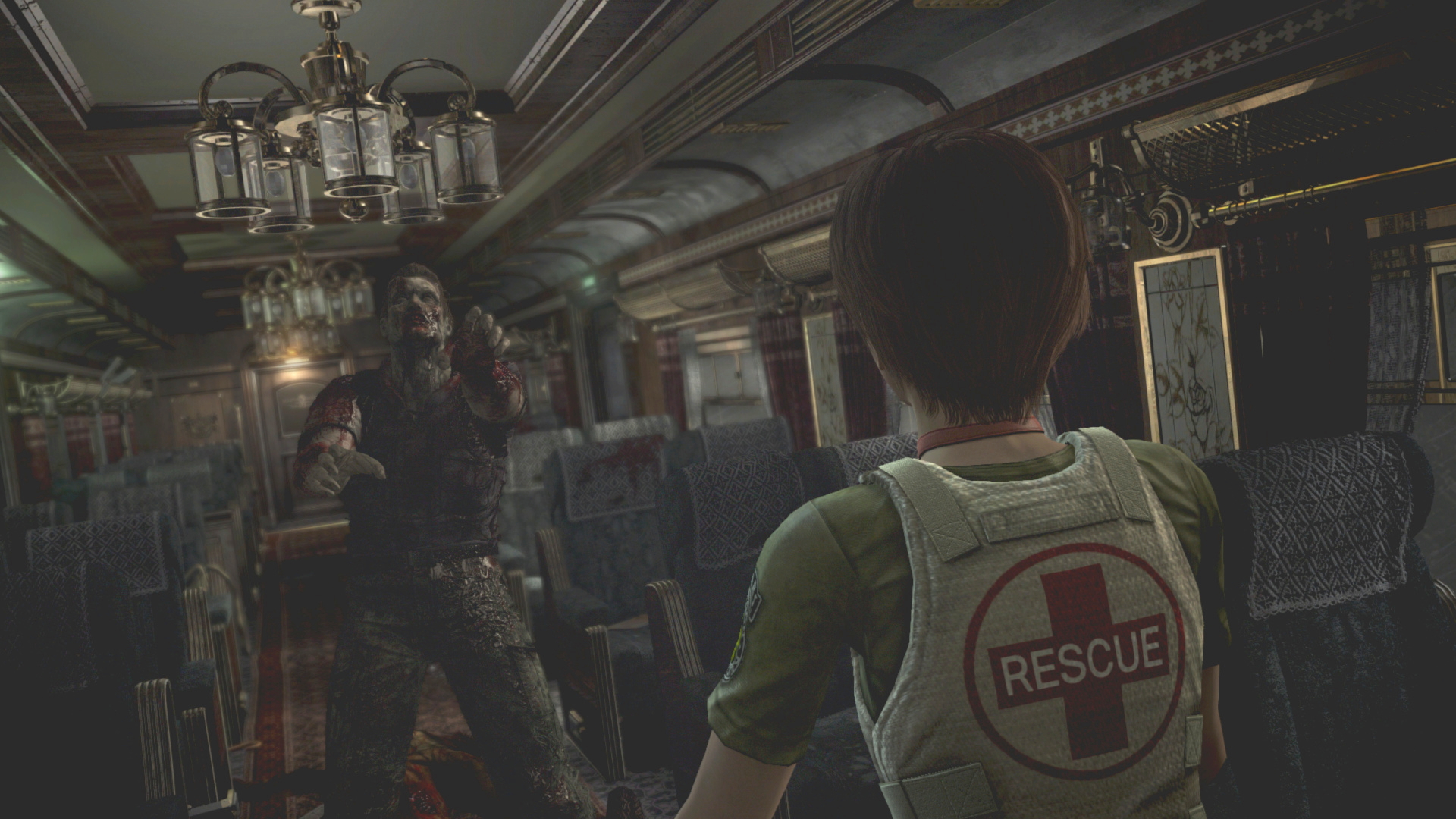

This feature first appeared in Retro Gamer magazine. For more in-depth features exploring classic games and consoles delivered right to your door or device, subscribe to Retro Gamer in print or digital.
Yet despite its status today, the GameCube remake of Resident Evil, and its companion, Resident Evil Zero, were disappointing sellers for Capcom, the exclusivity to the Nintendo console harming it in the face of the incredible success of the PlayStation 2. As Alex Aniel notes in [unofficial Resident Evil history book] Itchy, Tasty, "It is likely that there would have been a drop, albeit smaller, on PlayStation 2 as well. By the time Resident Evil Zero was released, there were already various discussions in progress about the viability of the old Resident Evil gameplay formula, which had not evolved dramatically since 1996."
With Grand Theft Auto, Halo and Capcom's Devil May Cry all changing the gaming landscape in their own way, the Resident Evil series was starting to look quaint and old-fashioned in comparison. Devil May Cry had actually begun life as Resident Evil 4 before Capcom changed tack, feeling that the game had strayed too far away from the Resident Evil formula. Starting afresh in 2001, Resident Evil 4 formed part of The Capcom Five, a quintet of games announced for the console on 14 November 2002.
Undeterred by the relatively poor performance of the remake and Zero, the plan was to release all five games exclusively on the Nintendo GameCube. There are significant indicators in Resident Evil 4's 80-second trailer here that this would be something quite different from the previous games. The flowing locks of a youthful Leon Kennedy take centre stage as he paces through dynamic dark corridors, stalked by a smoky black presence. The constantly shifting backgrounds and a camera diligently floating behind Leon betrays a new direction for the series. Despite several technical and story-related issues – a trailer from 2003 with Leon encountering a terrifying figure armed with a hook, was ultimately scrapped due to the GameCube's limitations – Resident Evil 4's (almost) final version was ready to stun the world in 2004.
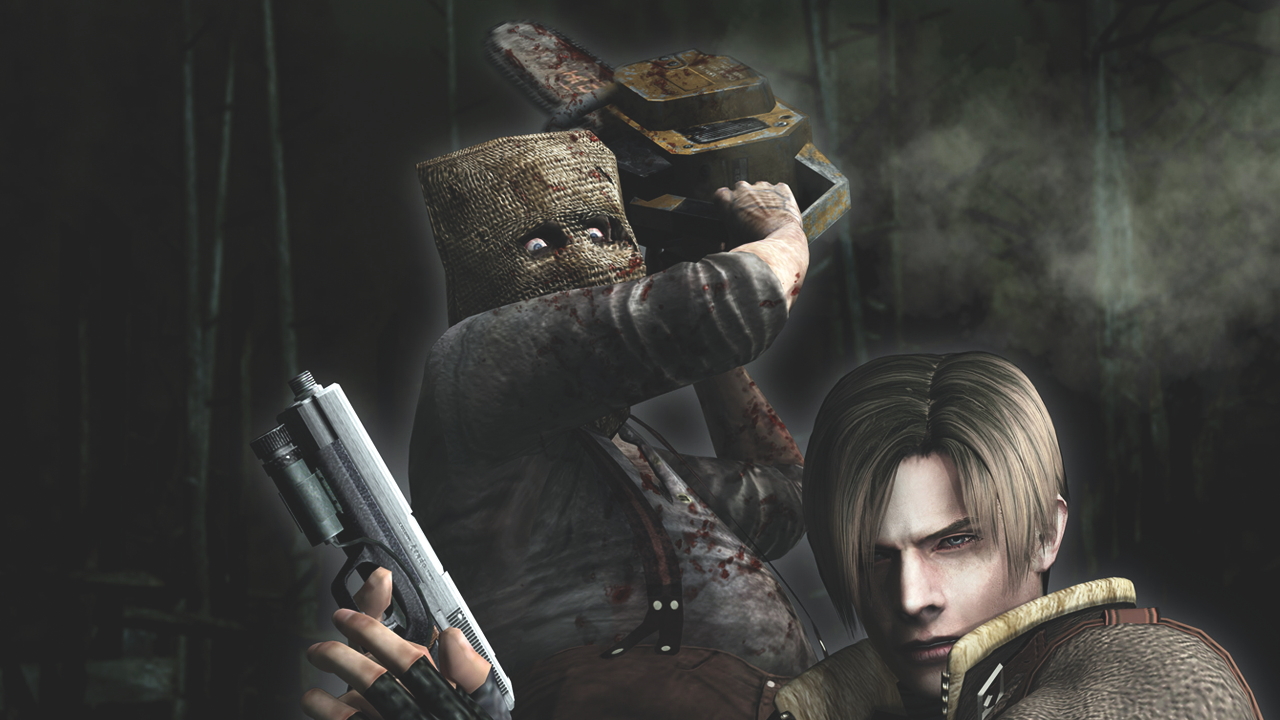
The scene was Capcom's Gamers' Day event in Las Vegas on the 28 January. Resident Evil 4's previous two trailers had revealed a new direction and an adherence to the old-school horror tropes for which the series had become famed. Now, all expectations were shattered as Capcom displayed its latest trailer and a playable demo.
It was a dramatic new face for survival horror. Former Raccoon Police Department officer Leon Kennedy is now part of a government task force assigned to eliminate the threat of the nefarious corporation, Umbrella. With most of its agents under investigation, Leon is dispatched to Spain to investigate the kidnapping of the president's daughter, Ashley Graham. The 2004 trailer begins with the agent pacing cautiously through a dark rural area, gun ready in anticipation of trouble. Lightning arcs downwards, lighting the scene; it is the dingy village from the finished game's opening. Villagers menace Leon as the captions tease an apocalyptic scenario and boast that, "New camera angles put you right in the action."
Real-time actions are presented with a cinematic sheen as Leon jumps theatrically from a window and over fences; giant boss monsters appear, menacing the hero as he optimistically plugs away with his handgun. The camera sits behind Leon all the time, following his movements as the antagonists, a world away from lumbering zombies, dodge and attack. As the trailer succinctly claims, it will be, "One hell of an intense story."
A whole new world
We all knew that Resident Evil 4 would be something different and fresh but we were expecting that in a horror context, not an action one.
Alex Aniel
Resident Evil 4 formed one half of a dual-cover release of the March 2004 issue of Game Informer magazine, the subtitle screaming "The shocking new face of survival horror". "[When] the news broke in Game Informer, I was stunned, to say the least," remembers Alex Aniel. "[It was] a complete 180-degrees on a formula that had been in place for close to a decade at that point. We all knew Resident Evil 4 would be something different and fresh – but we were expecting that in a horror context, not an action one."
Gone was the haunted castle, hallucinations, zombies and ominous black smoke of the previous trailers. Instead, the most human-like enemies of the Resident Evil franchise to date are hunting down Leon: rustic villagers armed with pitchforks, sickles and knives, and given a voice, a guttural Spanish brogue laced with hostile intonation. Of equal shock was Capcom's announcement early in November 2004. "It looks like the folks at Capcom Entertainment were only kidding," chimed IGN, "when they sternly insisted over and over again that the GameCube action thriller Resident Evil 4 would forever remain exclusive to Nintendo’s console."
Excitement and pressure from fans and (apparently) shareholders had taken its toll: Resident Evil 4 would be coming to the Sony PlayStation 2, albeit some months after its GameCube release. Even though the game became a massive hit on the Nintendo console, selling over 1.5 million units, the Sony PlayStation 2 version enabled a whole new legion of fans to enjoy the game, starting with that famous village location.
Welcome to the family, son
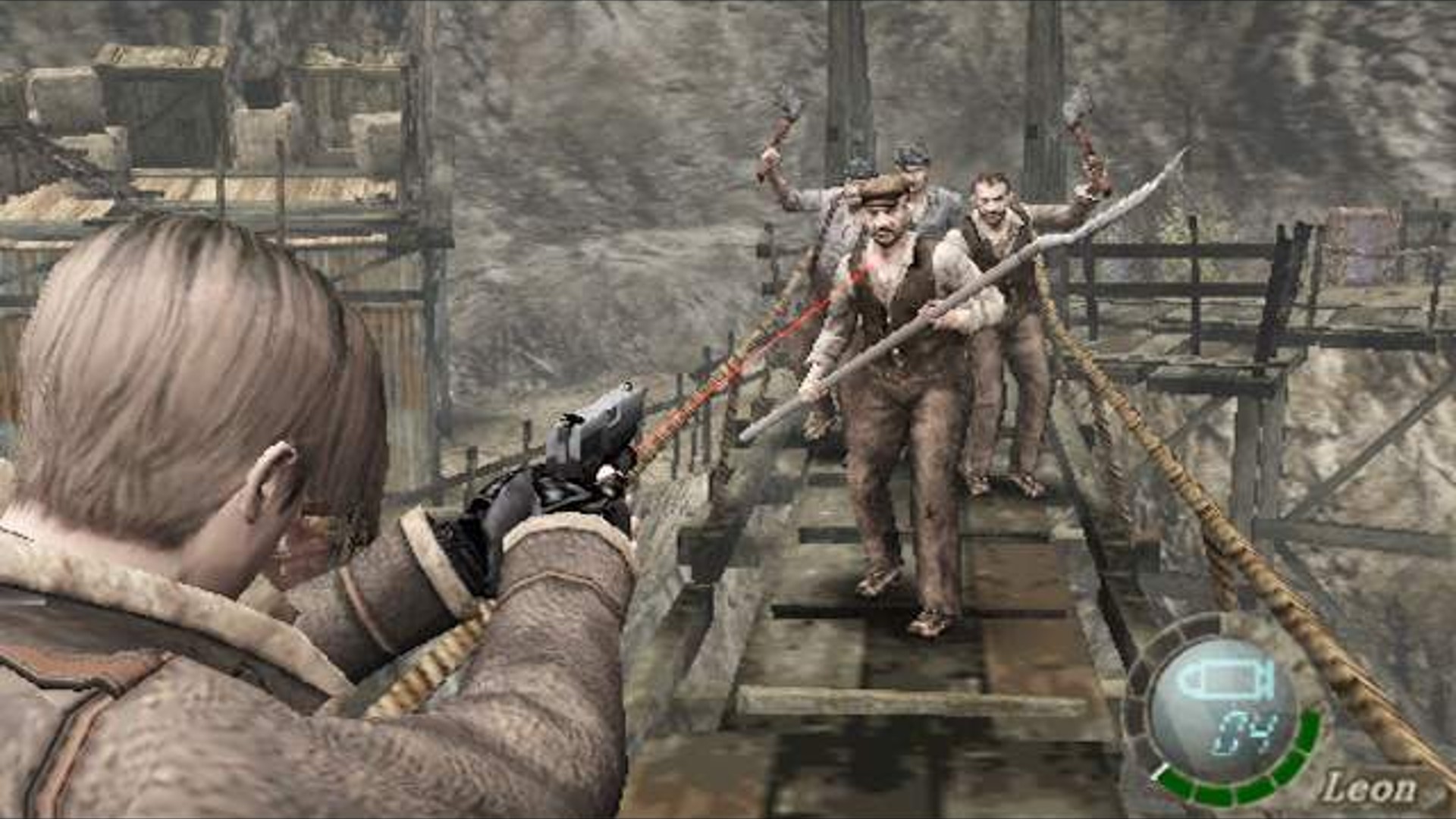
The village forms the rapidly beating heart of Resident Evil 4's opening. Sent to a remote Spanish region to locate Ashley Graham, Leon soon finds himself surrounded by its citizens, acolytes of Los Illuminados, the mysterious cult led by Osmund Saddler that has captured the president's daughter. The villagers are infected with Las Plagas ('the pests'), and after a token effort by Leon to question one of them, they turn on the agent in a momentous early scene led by the chainsaw-wielding Dr Salvador.
Chuck Beaver was co-designer for the 2008 sci-fi horror Dead Space, and he cites the opening village encounter as his favourite scene in the game. "That was great design – in fact, I think that whole opening town zombie rush is pretty epic – talk about feeling in the moment." The village serves as the perfect primer to the horrors ahead of the player and the new gameplay style in Resident Evil 4, a claustrophobic nightmare as the Ganado ('cattle') relentlessly pursue Leon, led by the near-invulnerable Dr Salvador. With ammunition scarce at this early stage, the player must frantically explore the buildings in search of weapons, ammunition and health items, clambering over roofs, crashing through windows and kicking down ladders to avoid the pursuing mob.
"I remember being wowed by the intensity of that scene and the enemies coming from all directions," recalls Alex Aniel. "With Resident Evil games being fixed-camera affairs up until that point, the level of immersion was a new experience." The fast-paced, action- movie ambiance of this early scene continues throughout Resident Evil 4 as enemies hurl themselves in their droves at Leon, the brief moments of respite precisely positioned to give the player some much-needed breathing space. "My first experience [playing] Resident Evil 4 was the demo disc included in a one-off special of Famitsu [magazine]," continues Alex. "That sold me on the new formula – it was unlike anything I had ever tried up until that point, and easily the most visually beautiful 3D game I had laid eyes on. I knew then that Capcom had a hit on its hands."
A view(point) to a kill
It was very brave to make the shooting static.
Alex Moore
Having shaken off the shackles of its antiquated gameplay, Resident Evil began gathering new fans, intrigued by the mix of horror and action. The centrepiece of this fresh approach, at least initially, is the novel viewpoint, the game's camera constantly sitting behind and to the protagonist's right, shifting to a sharper, more focussed view when Leon aims his weapon. "I was aware of that type of camera angle – but not to the extent that Resident Evil 4 took it," says Alex Moore. "It felt very new, fresh and much more cinematic."
The constant flow of action setpieces means that, even during the many cutscenes, there's no rest for the player as the Ganado push boulders at Leon or a QuickTime Event boss battle unexpectedly crops up. The persistence with tank controls (rather than, for example, the ultra-fluid movement of Devil May Cry's Dante) also works in the game's favour, helping to make each encounter a frantic battle against the onrushing Ganado.
"It was very engaging to swing through the core loops of combat and then out to cutscenes," recalls Chuck Beaver. "And then back into those foreboding settings, exploring with those tank controls!" The early Dead Space prototypes had lovingly recreated Resident Evil 4's control method – but this was one influence that didn’t last. "Back in those days, when the [EA Redwood Shores] team was tiny, I was in charge of focus testing," says Chuck. "Gears Of War and Halo had become cultural touchstones by then – all the focus tests clearly voted down the now-outdated controls as too sluggish, despite being horror genre standard." Nevertheless, Resident Evil's continued use of the rotational control method perfectly suits its gameplay, although it will be interesting to see how the remake adapts this for a contemporary audience.
Spaces between
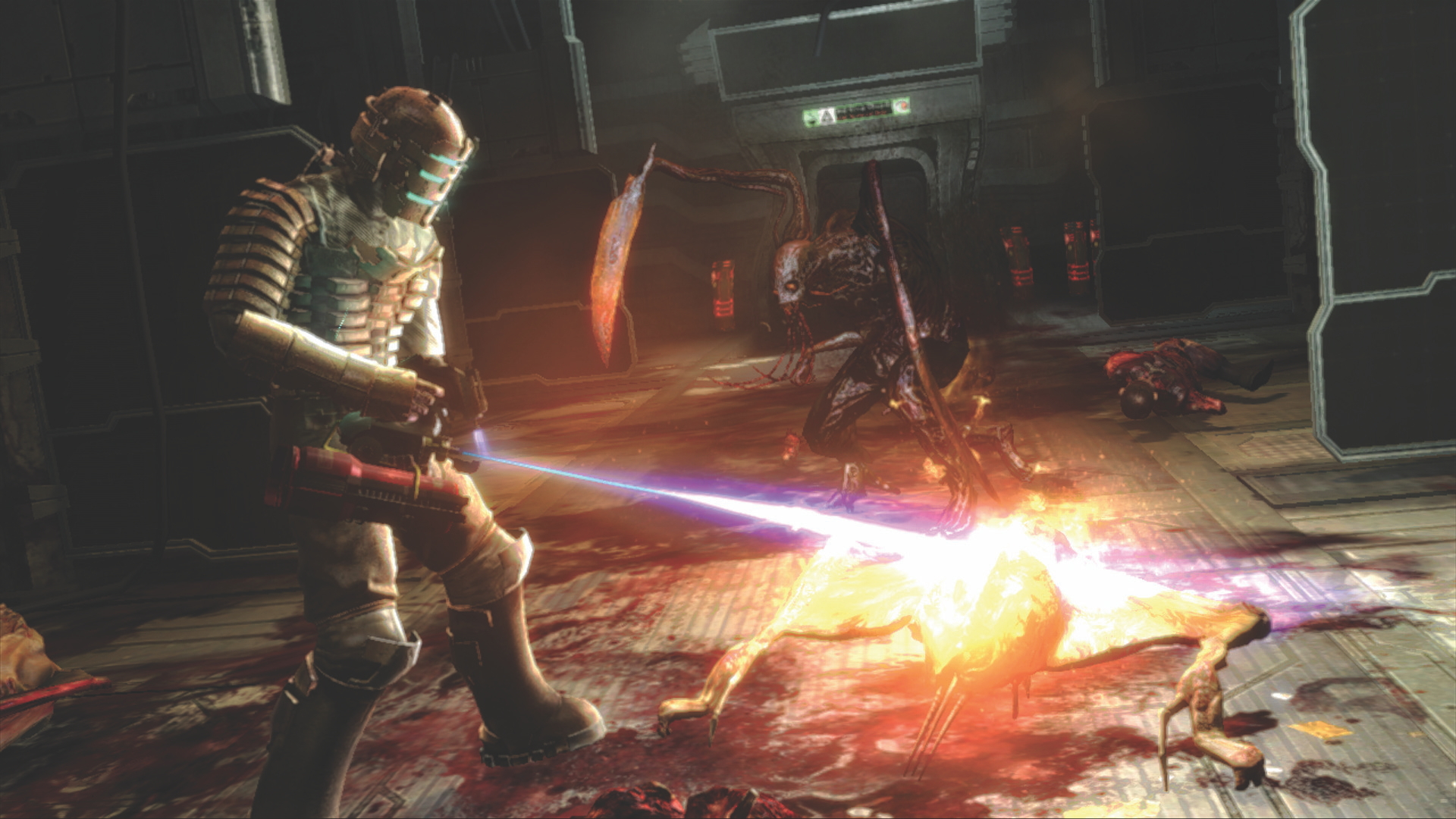
Despite the move away from tank controls, Dead Space continued to be highly influenced by the Capcom game, often called 'Resident Evil 4 in space' during early development.
As a Resident Evil virgin, the new camera angle did not faze Chuck Beaver. "I was genuinely surprised at how engrossing and fun it was, and didn’t realise how well they had perfected the atmosphere and vibe. At the time, each wave of new game releases seemed to bring a huge leap in resolution, and it was fun to enjoy that wave." Released in widescreen format – back when it was not common – a colossal number of Resident Evil 4's elements made it into Dead Space, not least its seemingly invincible monsters, the Regenerators.
"Ha, yes, those for sure,” laughs Chuck when we ask him about Resident Evil 4’s effect on Dead Space. "And the little red dot as the targeting reticule, holding a button to aim, the abandoned tank controls and over-the-shoulder third-person orientation. So many of the basics of combat, control and, of course, the enemies. The exploding head with a whipping parasite was definitely an inspiration for some of our early Necromorph concepts – especially those with a body-horror angle."
Dead aim
For gamers brought up on Resident Evil and its frustratingly imprecise aiming, that red line and dot (which increased in size when an enemy was in Leon's sights) was a blessing, helping Leon target vulnerable locations – in other words, the head – and with this came Resident Evil 4's glorious wound animations.
While Rare's GoldenEye and the PC game Soldier Of Fortune had already notably done body-part-specific damage and the subsequent AI reaction, it was Resident Evil 4 that truly popularised the process. Shoot a Ganado in their leg and they clutch the limb in agony before Las Plagas overpowers the pain and the villager continues their attack. And, naturally, headshots come to the fore, enemy bonces exploding in a mass of gore, sometimes a bladed Las Plagas sprouting from their open necks and resuming the assault on Leon.
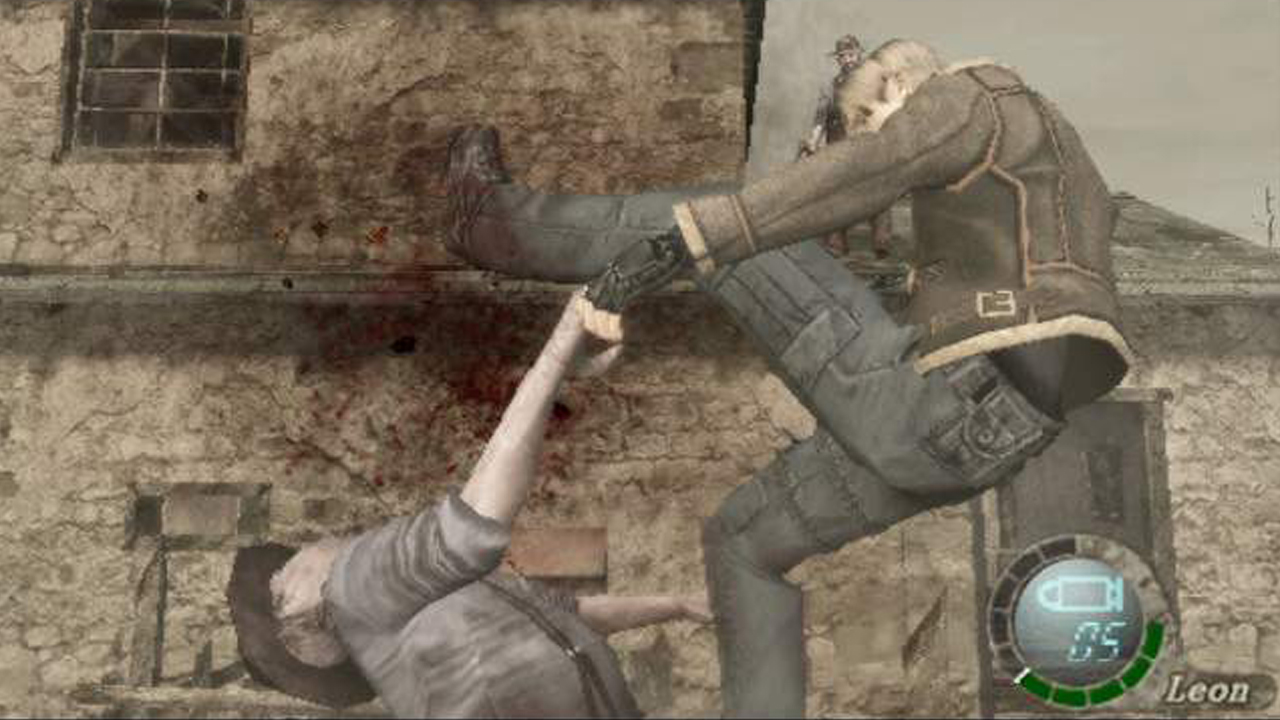
The agent's inability to move and shoot at the same time also increases the game's tension. "My first reaction to Resident Evil 4 was, 'How do I shoot?' followed by, 'Why can't I move and shoot?' followed by, 'Oooooh'" recalls Alex Moore. "I instantly clicked with the game far more than I'd ever done with earlier entries."
Resident Evil 4’s shooting, naturally a significant part of the game, had been perfected, accentuating its move to a more action-based template. "It was very brave to make the shooting static," continues Alex. "But it just fits perfectly with the game and adds a depth to the gameplay that, until that point, shooters hadn't really had."
Even better, shooting an enemy can stagger them. Leon can take advantage of this if he is close enough, delivering a swift and powerful kick to his opponent's head via another cinematic tangent. These little asides and filmic interludes pepper Resident Evil 4: villagers push a giant boulder after Leon; ancient suits of armour crash towards Ashley; a mysterious alien-like creature stabs at Leon with its tail; and then there are the bosses.
Regenera-don't
From bizarre bosses such as Resident Evil's Plant 42 to the unstoppable (well, almost) hulking Tyrant Nemesis in Resident Evil 3, this is a series that has always revelled in its fights against rampaging, mutated super enemies. The variety of these disgusting and horrible creatures has motivated a whole generation of horror game designers, and not just those behind Dead Space's regenerating Necromorph.
Says The Persistence’s Alex Moore, "We were set on having different-sized enemies from the start, and a lot of that came from the contrast that the Resident Evil 4 bosses bring to the game – for example, we wanted the Berserker to have the same, 'Oh shit!' feel as an El Gigante encounter." Additionally, Resident Evil 4 brings regular enemies to life, the slow mindless zombies of the previous games a far cry from the villagers and soldiers Leon encounters. "I remember most of the Ganado behaviour of rapidly closing – that was always freaky," remembers Chuck. "And there was always some icky person right in your face about to brain you with an axe!" Throughout Resident Evil 4, enemies sway from side to side to dodge Leon's shots, hold their hands up to protect their heads and wield dangerous implements, often throwing them at the agent.
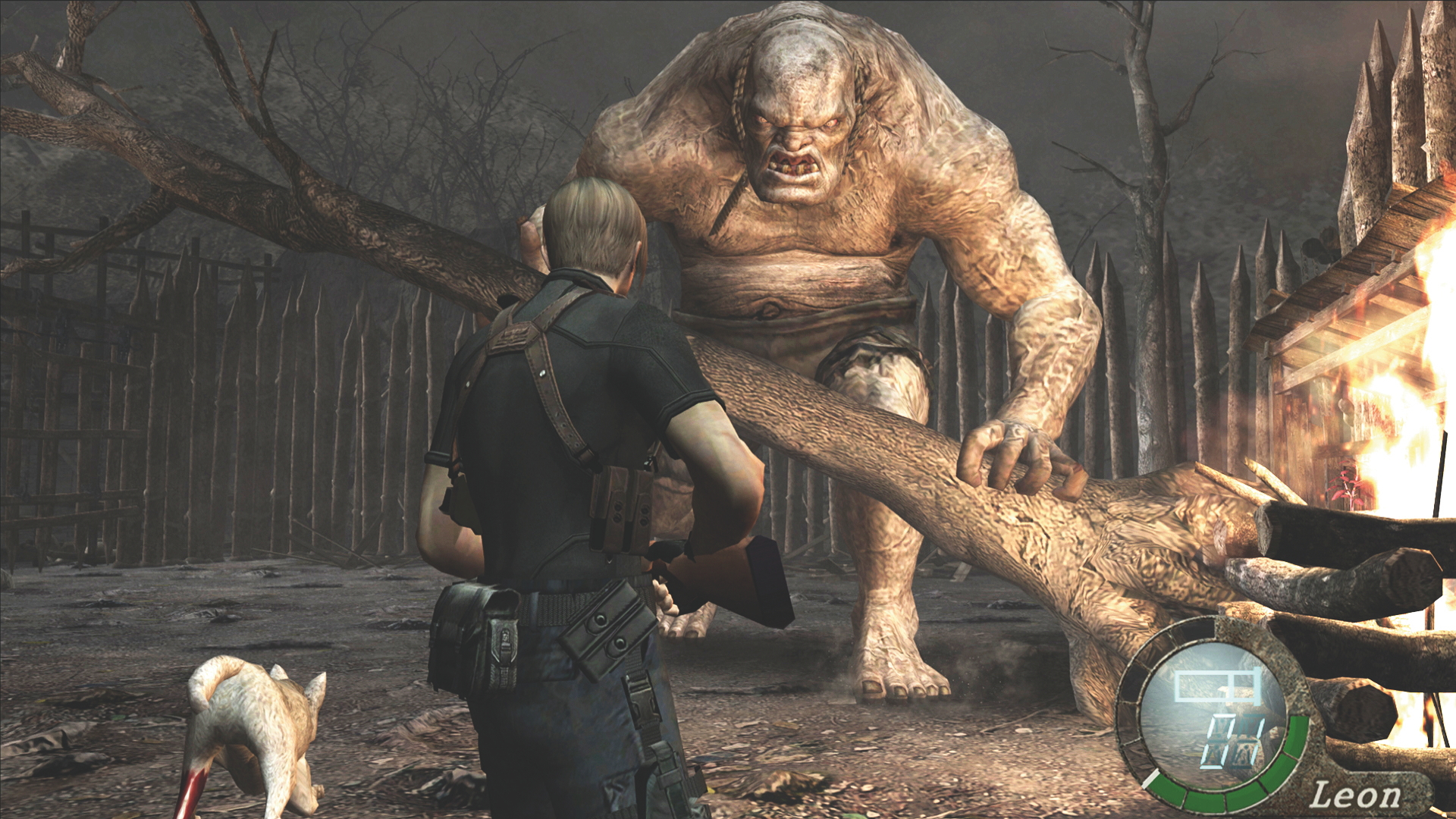
So you get it. Resident Evil 4 is good. Great, even. But the impact – the impression on gamers, super fans such as Alex Aniel and developers – has rarely, if ever, been matched in video game history, reaching out to many of the most successful video game franchises of all time. "When Resident Evil 4 – the inspiration for our close-up third-person perspective – finally came out in January 2005, it reminded us that Gears was about one thing – combat," says Gears Of Wars designer Cliff Bleszinski in his book Control Freak. "And combat was fought close-up, and it was physical, strategic, scary and subject to a rhythm that was all its own."
Even Resident Evil 4’s inventory management, smoothed out from the tight and laborious process of the earlier entries, has inspired its own game, Fractal Projects' Save Room. "We looked at Resident Evil 4's inventory system when we were making Rogue Trooper," says Alex Moore, "especially how the herbs and other items combined. While [Resident Evil 4] is a very different game to Rogue Trooper, there's always something to learn from the best games out there."
Remake nation
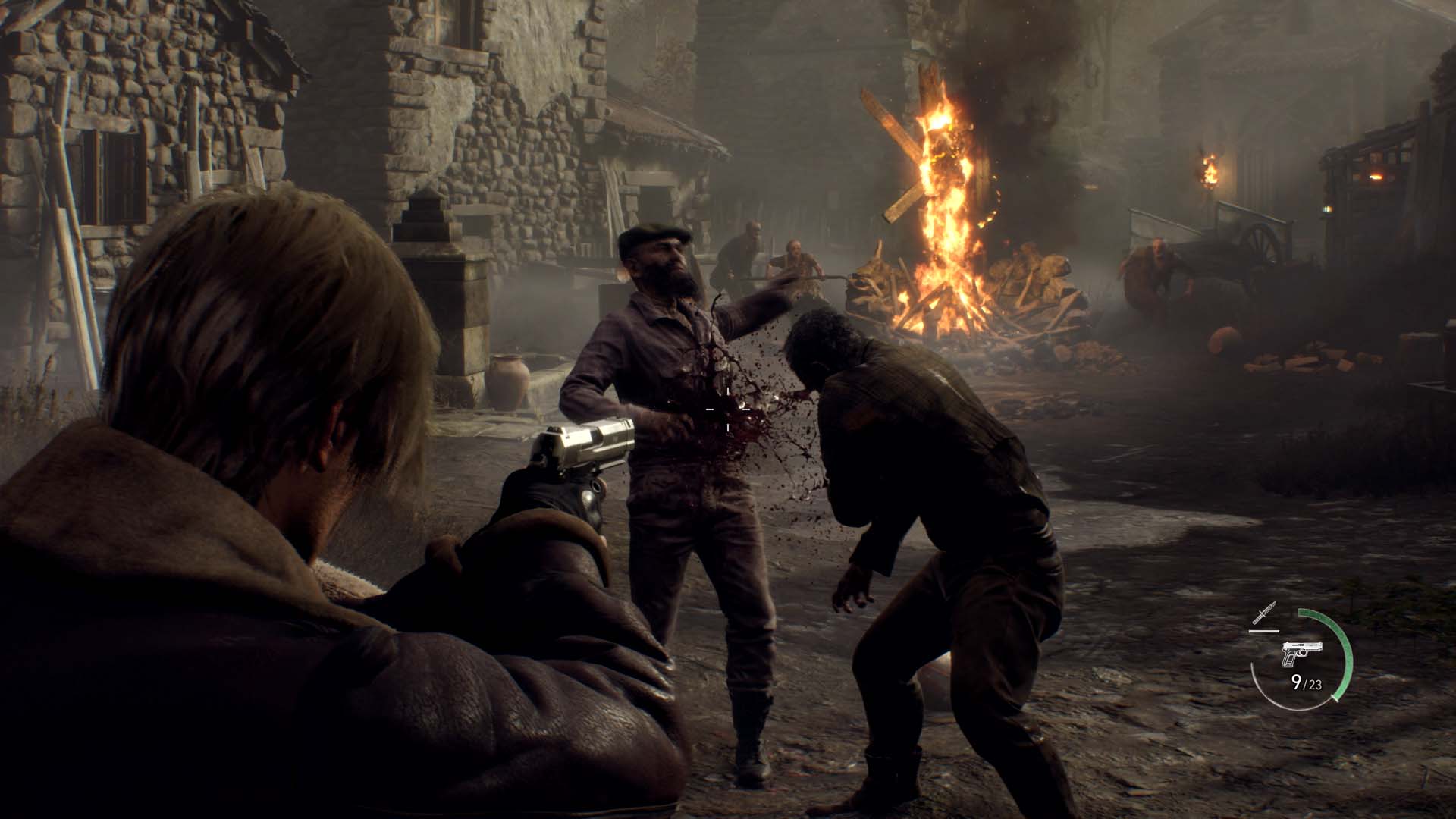
Every little element to the game's design leaves an impression.
Alex Aniel
All the inspiration derived from Resident Evil 4 springs from admiration of its aesthetic, ground-breaking technical details and gameplay. As the game enjoys its latest iteration, a ground-up remake following countless HD ports and conversions, it's clear that this goes beyond mere nostalgia.
"I can’t think of another game that's quite like Resident Evil 4 in terms of the complete package," notes Alex Aniel. "And while many games have adopted its gameplay, you won't find someone like Leon or Salazar in a game like Dead Space or The Last Of Us." Most strikingly, for a game that’s over 18 years old, is how ahead of its time Resident Evil 4 was. Continues Alex, "Every little element to the game’s design leaves an impression, and the quality of the visuals, music and gameplay was far beyond the competition in 2005. Why is it still popular today? Because it’s always been entertaining and provocative to play."
For Alex, the Resident Evil franchise fostered a deeper interest in Japanese culture, culminating in a move to Japan shortly after the release of the fourth game. Fluent in the language, he connected to many of the people behind Resident Evil throughout the years for his book, Itchy, Tasty. "Without Resident Evil, I would be a very different person."
It feels like Retro Gamer could dedicate a whole issue to Resident Evil 4. Over the last few pages, we haven’t even discussed its beloved unlockable, the adrenalin-fuelled Mercenaries, or the most quotable of all of its characters, the ubiquitous Merchant ("What’re you buyin'?"). "Why is that so iconic?" laughs Chuck Beaver. "No one knows. But it is."
Like so many of Resident Evil 4's parts, the Merchant just fits, and fits perfectly. "Someone who may not have yet played Resident Evil 4 may be tempted to skip it in favour of the remake," says Alex Aniel. "While I have little doubt that it will be an excellent game in its own right, the 2005 original is something special and not to be missed regardless."
This feature originally appeared in Retro Gamer magazine. For more fantastic features and interviews, you can subscribe to Retro Gamer in print or digital here.







